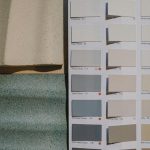You can heat press polyamide (nylon) successfully by using lower temperatures around 270°F to 300°F and applying medium pressure for 10-15 seconds to avoid melting or scorching the fabric. Make sure you pre-wash and smooth the nylon to remove residues and wrinkles, and select HTV made specifically for nylon for best adhesion. Protect the fabric with a Teflon sheet while pressing. Keep these tips in mind, and you’ll find expert guidance to create durable HTV designs on nylon.
Table of Contents
Key Takeaways
- Polyamide (nylon) can be heat pressed but requires lower temperatures (270°F-300°F) and short pressing time (10-15 seconds) to avoid melting or scorching.
- Use HTV types suitable for nylon such as PU, PVC, Stretch, Flock, or Printable HTV to ensure proper adhesion and flexibility.
- Pre-wash and dry nylon fabric, then pre-press it to remove moisture and wrinkles before applying HTV for optimal bonding.
- Apply medium, even pressure with a protective Teflon sheet or parchment paper during pressing to prevent fabric damage and HTV peeling.
- After heat pressing, cool the fabric completely before peeling the carrier sheet and follow gentle washing care to maintain HTV durability.
Understanding Polyamide Fabric Properties
Before you start heat pressing polyamide, you need to understand its unique fabric properties.
Polyamide, commonly known as nylon, is a synthetic fiber valued for its strength, elasticity, and resistance to abrasion. You’ll notice it’s lightweight and smooth, which makes it popular for activewear and outdoor gear.
Polyamide, or nylon, is a lightweight, strong synthetic fiber prized for its elasticity and abrasion resistance.
Its moisture-wicking ability helps keep you dry, but it also means the fabric can be sensitive to heat and pressure. The fibers are thermoplastic, so they can soften or melt if exposed to excessive heat.
Plus, polyamide’s low moisture regain means it won’t absorb much water, impacting how adhesives bond during heat pressing.
Understanding these traits helps you adjust your heat press settings carefully to avoid damaging the fabric while ensuring a strong vinyl application.
Heat Sensitivity of Nylon Materials
You need to know nylon’s heat tolerance before you start heat pressing.
Nylon has specific temperature thresholds that, if exceeded, can cause damage or melting.
Understanding how heat exposure affects nylon will help you avoid ruining your fabric.
Nylon Heat Tolerance
Although nylon offers excellent strength and flexibility, its heat tolerance requires careful attention during heat pressing.
When you work with nylon, you need to remember that it’s sensitive to high temperatures, which can cause melting, warping, or discoloration. Unlike cotton or polyester, nylon’s synthetic fibers react quickly to heat, so you can’t just apply the same settings you use for other fabrics.
It’s important to use a lower temperature and shorter pressing time to protect the material’s integrity. Also, applying consistent pressure without excessive force helps avoid damaging the fibers.
Temperature Thresholds for Nylon
When working with nylon, understanding its precise temperature thresholds is essential to prevent damage during heat pressing.
Nylon typically softens between 230°F and 320°F (110°C to 160°C), but you should aim to keep your heat press below 300°F (149°C) to avoid melting or warping the fabric.
Applying heat above 320°F risks shrinking or discoloration, so it’s best to stay within the safe range.
Also, consider that different nylon blends might’ve slightly varied thresholds, so testing on a scrap piece is always a smart move.
Effects of Heat Exposure
Keeping nylon within its safe temperature range is only part of the process; understanding how heat exposure affects the material helps you avoid unwanted damage.
When you expose nylon to excessive heat, its fibers can weaken, and the fabric may lose its integrity.
Here’s what you might notice if heat exposure goes beyond nylon’s tolerance:
- Fabric becomes brittle or stiff
- Surface develops shiny or melted spots
- Colors fade or shift unevenly
- Material shrinks or warps
- Adhesion of HTV weakens or peels off
Choosing the Right Heat Transfer Vinyl for Polyamide
When choosing heat transfer vinyl for polyamide, you’ll want to take into account types specifically designed for nylon to guarantee proper adhesion.
Pay close attention to adhesive compatibility since polyamide can be sensitive to certain glues.
Also, prioritize vinyl that offers both durability and flexibility to maintain the fabric’s performance over time.
HTV Types for Nylon
Choosing the right heat transfer vinyl (HTV) for nylon is essential to guarantee strong adhesion and vibrant results. Nylon’s smooth, synthetic nature means not all HTVs will stick well or withstand washing.
You’ll want to pick types designed for flexibility and durability. Here are five popular HTV options that work well on nylon:
- Polyurethane (PU) HTV: Soft, stretchy, and breathable, perfect for activewear.
- Polyvinyl Chloride (PVC) HTV: Durable with a glossy finish but less flexible.
- Stretch HTV: Specifically designed to move with nylon fabrics.
- Flock HTV: Velvety texture adds dimension but needs careful heat settings.
- Printable HTV: Allows custom designs with vibrant colors on nylon.
Select the type that matches your project’s needs for the best outcome.
Adhesive Compatibility Factors
Although polyamide fabrics like nylon offer great durability and flexibility, you’ll need to take into account specific adhesive compatibility factors to guarantee your heat transfer vinyl bonds properly.
First, consider the adhesive’s melting point—it must activate at a temperature that won’t damage the nylon. Look for HTV adhesives formulated for synthetic fibers, as they provide a stronger, more reliable bond.
Also, evaluate the adhesive’s flexibility to make certain it moves with the fabric without cracking or peeling. Pay attention to the adhesive’s chemical composition; some adhesives mightn’t bond well with polyamide’s surface properties.
Testing a small swatch before a full project helps confirm compatibility. By choosing the right adhesive, you make certain your design adheres securely and lasts through wear and washing.
Durability and Flexibility
Selecting the right heat transfer vinyl (HTV) is essential to guarantee your polyamide fabric retains its durability and flexibility.
Polyamide, known for its strength and stretch, demands an HTV that can move with the fabric without cracking or peeling.
When choosing HTV, look for materials that offer:
- Excellent stretch to accommodate fabric movement
- Strong adhesion to withstand washing and wear
- Resistance to cracking and peeling over time
- Soft hand feel to maintain fabric comfort
- Compatibility with polyamide’s heat sensitivity
Preparing Nylon Fabric for Heat Pressing
Before you start heat pressing nylon fabric, you need to prepare it properly to guarantee the best results.
Begin by washing and drying the nylon to remove any finishes, oils, or residues that could interfere with adhesion. Use a gentle detergent and avoid fabric softeners, as they can leave a film.
Start by washing and drying nylon with gentle detergent; avoid fabric softeners to ensure proper adhesion.
Once clean, iron the fabric on a low heat setting to remove wrinkles, making sure of a smooth surface for the heat transfer vinyl (HTV).
Lay the nylon flat on your press or work surface, making sure it’s taut and wrinkle-free.
Finally, pre-press the fabric for a few seconds to eliminate moisture and further smooth the surface, which helps the HTV bond more effectively.
Proper preparation prevents peeling and ensures a long-lasting, vibrant finish.
Recommended Heat Press Settings for Polyamide
Once your nylon fabric is properly prepared and free of wrinkles, you can focus on the heat press settings to guarantee a strong, lasting bond with your heat transfer vinyl.
Nylon, being sensitive to heat, requires precise adjustments to avoid damage while ensuring adhesion. Here’s what to keep in mind:
- Set temperature between 270°F and 300°F (130°C to 150°C)
- Apply medium pressure, avoiding heavy pressing that can scorch fabric
- Limit pressing time to 10-15 seconds to prevent melting
- Use a protective Teflon sheet or parchment paper over the HTV
- Allow fabric to cool completely before peeling the carrier sheet
Following these settings will help you achieve vibrant, durable results without harming your polyamide garment.
Troubleshooting Common Heat Press Issues on Nylon
If your heat press results on nylon aren’t turning out as expected, don’t worry—common issues like scorching, peeling, or uneven adhesion often have simple fixes.
First, scorching usually means your temperature is too high or pressing time is too long. Lower the heat slightly and reduce the press time.
If your HTV is peeling off, make sure you’re using the right pressure—too light can cause poor adhesion, too heavy might damage the fabric. Also, check that you’re peeling the carrier sheet at the recommended temperature, usually warm or cool.
Uneven adhesion often signals that the heat isn’t distributed evenly; try repositioning your material or using a heat press with a more consistent platen.
Adjust these factors, and your nylon HTV should look great.
Tips for Long-Lasting HTV Designs on Polyamide
Achieving long-lasting HTV designs on polyamide requires careful attention to material preparation and pressing technique. You want your design to stay vibrant and attached, so follow these essential tips:
To keep your HTV design vibrant on polyamide, focus on prep and pressing techniques.
- Pre-wash the polyamide fabric to remove finishes that might block adhesion.
- Use a Teflon sheet or parchment paper to protect both the HTV and fabric during pressing.
- Apply firm, even pressure and avoid excessive heat that can damage nylon fibers.
- Let the design cool completely before peeling the carrier sheet to guarantee proper bonding.
- Wash the finished garment inside out in cold water and air dry to prolong the design’s life.
Frequently Asked Questions
Can Polyamide Fabrics Be Washed in Cold Water Without Damaging HTV?
Yes, you can wash polyamide fabrics in cold water without damaging HTV. Just make sure to use a gentle cycle and avoid harsh detergents, so your design stays intact and vibrant for longer.
Is It Safe to Use a Household Iron Instead of a Heat Press on Nylon?
You can use a household iron on nylon, but you must be careful. Use a low heat setting, avoid steam, and press gently to prevent damage. A heat press offers more consistent results and safety.
What Are the Environmental Impacts of Using HTV on Polyamide Fabrics?
You should know using HTV on polyamide can increase energy use and create waste from excess vinyl. Plus, some adhesives release chemicals during heat pressing, so consider eco-friendly materials and proper disposal to reduce your environmental impact.
Can You Layer Different Colors of HTV on Nylon for Multi-Color Designs?
Yes, you can layer different HTV colors on nylon for multi-color designs. Just make sure each layer cools properly before pressing the next, and use lower heat settings to avoid damaging the fabric or vinyl layers.
How Does Humidity Affect the Heat Pressing Process on Polyamide Fabrics?
Back in the Victorian era, they’d never guess humidity affects heat pressing polyamide. You’ll find moisture weakens adhesion, causing bubbles or peeling. So, keep your fabric dry and press quickly to get crisp, lasting results every time.
- Recycling Nonwoven Fabrics: Is It Possible? - July 11, 2025
- Recycling Nonwoven Fabrics: Is It Possible? - July 11, 2025
- Recycling Nonwoven Fabrics: Is It Possible? - July 11, 2025







